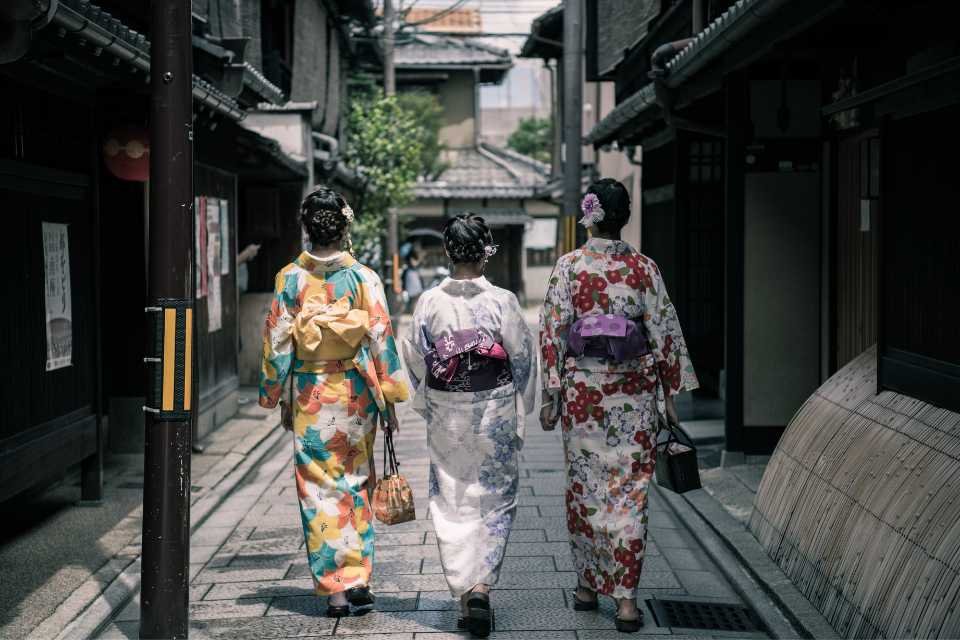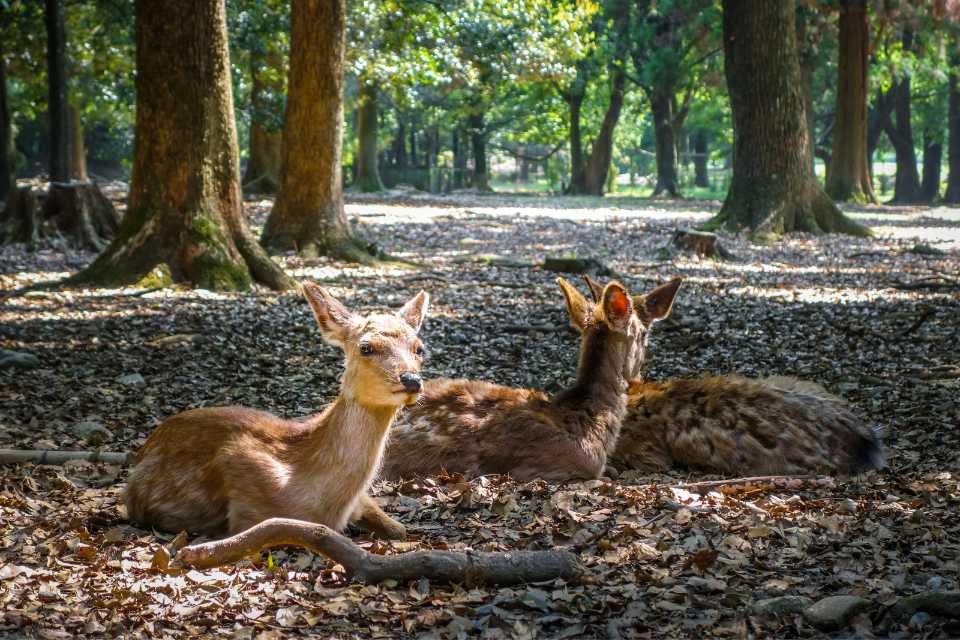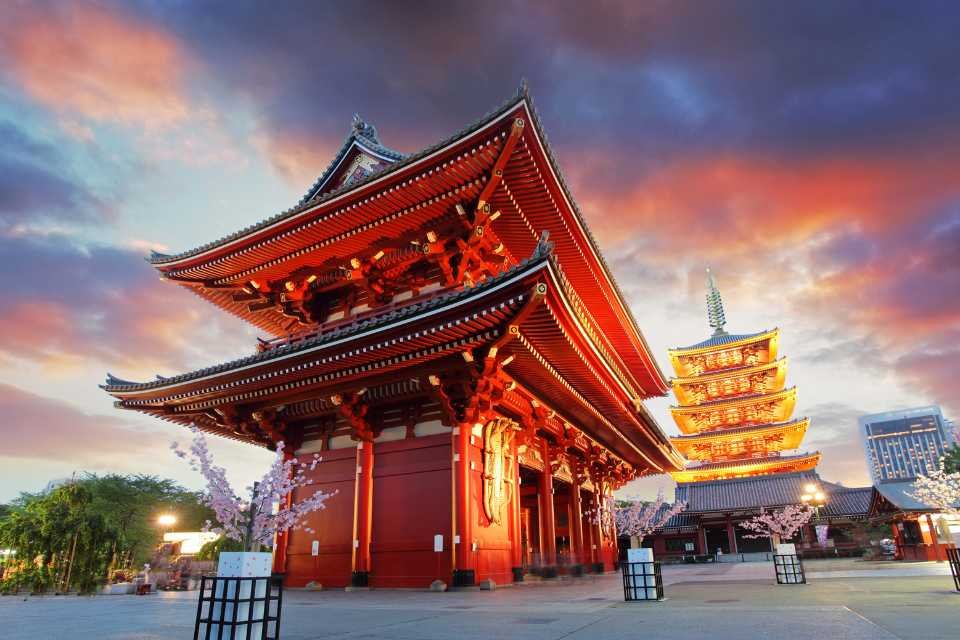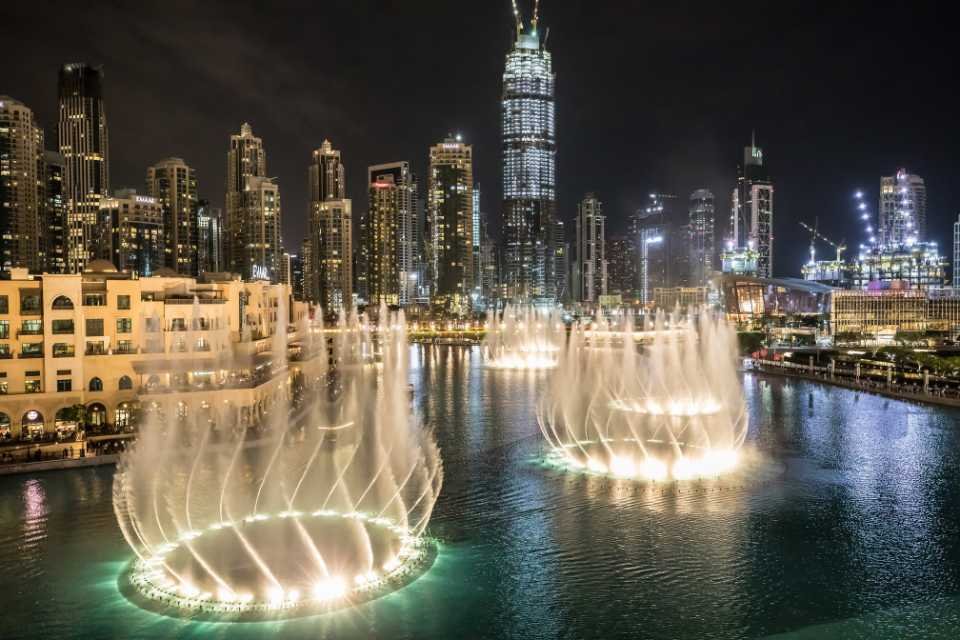18 unmissable things to do in Japan
All the things in Japan you simply can’t miss
Picture the scene: you’ve waited or saved up for months and finally booked your flights to Japan. Now, it’s time to fill out your travel itinerary. But then, you realise just how many amazing things there are to see and do in a short space of time.
If this is your dilemma, then the following sights, experiences and places will always make the ‘must see / must do’ list. All you need to do is choose the ones close to where you’re staying!
1 of 18
Ride the Shinkansen
Japan is known around the world for its exceptionally advanced public transport system, specifically its high speed train network. These trains, called Shinkansen in Japan or ‘bullet trains’ in the West, rifle across Japan’s islands at hundreds of miles per hour.
If you’re planning a multi-city trip, then don’t bother with flights or coaches - the Shinkansen is an experience in itself. The trains feel more like planes (and are even better than most), with extreme cleanliness and punctuality watchwords on every trip. The Shinkansen even feels fast, especially when going over bridges and through tunnels.
Read our bullet train guide to help you plan your Shinkansen experience or visit JRPass.com for a tourist ticket (the cheapest way to travel in Japan)
2 of 18
Visit Mount Fuji
Mount Fuji isn’t just a focal point of Japan’s geography – it’s also at the centre of the nation’s heritage and spirituality. The snow-capped active volcano is part of Japan’s founding story and is home to shrines, stories and spirits which feature heavily in folklore and even modern media.
Fuji is a challenging climb that should only be attempted in the summer months. But if hiking isn’t your thing, viewing the mountain from the village of Hakone or from the plains that lead to the sea are both equally rewarding.
If you’re only visiting Tokyo, you can book Mount Fuji day trips that will take you to a handful of viewpoints and back again. Or, if the weather is particularly good, you could be lucky enough to see Mount Fuji from the city - head to the top of Tokyo Skytree to give yourself the best chance of seeing Mount Fuji on a clear day.
3 of 18
Try conveyor belt sushi
Japan’s most ubiquitous dish; the bite-sized rolls of rice, fish and vegetables are twice as fun if it arrives at your table on a mini conveyor belt. These restaurants have become popular in the UK and the rest of the world (get the experience at Yo Sushi if you’re still some way off your Japan trip), but the OG conveyor sushi restaurants in Japan go way beyond in terms of wackiness and flavours.
You’ll find conveyor sushi, known as Kaiten Sushi, at every turn in Japanese cities, so you’ll need to root out the best ones. We loved Katsu Midori Sheiba in Tokyo’s Shibuya district.
4 of 18
Explore Kyoto bamboo forest
Kyoto is packed with some of Japan’s best traditional sites. If you’ve only got time to do one thing, you should head to the Sagano bamboo forest. This idyllic grove has routes that wind through the giant green poles. Try and visit on a sunny day when the sun’s rays filter through the leaves for some truly stunning photos. Don’t forget to squeeze in a visit to the nearby Tenryuji Temple if you have time, or cross the city to the vivid red Fushimi Inari gates.
5 of 18
See Sumo wrestling in action
This one is a little tougher thanks to high demand and equally high ticket prices. You’ll need to either know someone, book well in advance or pay the super-high ticket prices to ensure seeing a bout. If you haven’t left enough time or don’t have enough money for a ticket, then many training stables have morning training sessions and practice bouts throughout the year which could be a good alternative.
6 of 18
Sing your heart out at a Karaoke bar
This one is easy to tick off the list and is great fun. Even the most sleepy Japanese towns will have at least one karaoke bar. Just hire the room, order your drinks and choose your favourite tracks to sing along to. Bear in mind that karaoke can be relatively expensive (especially if you are a tourist), so check the price before you head in!
7 of 18
Try seafood at Tsukiji Fish Market
Once the world’s largest fish market, Tsukiji Seafood Market has transformed into something slightly more touristy with vendors serving up fried octopus and grilled tuna from dawn until dusk. Although Tokyo’s explosive fish trade has now moved to a new, bigger and much more modern market, the old Tsukiji market is still pretty epic with street after street of all things fish for curious visitors to explore. Tsukiji is a great place to try super-fresh sushi (you’ll pay slightly more, but its worth it) and we can’t recommend the deep fried crab you’ll find on every corner enough.
Make sure you don’t miss any important stops or the best stores by joining a Tsukiji fish market guided tour hosted by a local expert.
8 of 18
Visit an Onsen
Japan is famous for it’s volcanic activity which in turn creates ideal conditions for thermal spas. These spas, known as onsen, are the ideal place to relax and enjoy a hot soak, sometimes outdoors.
Onsen are usually found in the mountains, but more ‘artificial’ onsen are popping up in Japan’s cities. One thing you’ll need to remember when visiting an onsen is to either cover up any tattoos, or find a tattoo-friendly onsen. Tattoos are still seen as taboo throughout Japan thanks to an association with crime and the Yakuza, and many public swimming pools ask those with tattoos to cover them before visiting.
A great place to find an onsen is in a Ryokan. These traditional guesthouses often have access to hot springs meaning you can tick two boxes at once.
9 of 18
Go Geisha spotting in Kyoto
Geisha are part the archetypal image of Japan. With thick white makeup, the traditional kimono and perfectly manicured hair, these modern-day superstars are as unique as they are intriguing.
Geisha gained a notorious reputation in the West thanks in part to the ordeals that past geisha had to endure. Today, geisha are primarily entertainers who sing, play instruments and chat to rich individuals willing to pay for their time. In Kyoto, geisha can be spotted in the Gion district as they head to their appointments. You’ll be hard-pressed to get a decent photo, however, as they are surrounded by security who will prevent you from snapping away!
It’s entirely possible to arrange geisha entertainment on your visit to Japan but if you have limited time or budget, then a night-time Gion geisha tour in Kyoto is ideal for Geisha spotting as they travel from appointment to appointment!
10 of 18
Visit Hiroshima Peace Museum
The city of Hiroshima was practically destroyed by the nuclear bomb dropped by the Americans in 1945. This comprehensive museum and installation explains the events in detail with artefacts, stories and interactive exhibits bringing the annihilation to life.
The subject matter within the museum is as grisly as it is informative, and any visitor should be prepared for harrowing images and stories. But thanks to the messages and evidence left over from this event that changed Hiroshima, Japan and the world forever, the museum remains a must-visit to ensure the bombings remain firmly in the past.
Make sure you squeeze in a trip to the nearby A-bomb Dome, one of the only surviving buildings from the bomb’s ground zero. The ghostly shell serves as a reminder of the destruction that comes with modern warfare and as a memorial to those who perished in the attacks.
Learn even more about Hiroshima’s amazing past with a guided tour of the city, including the memorial and the A-bomb Dome.
11 of 18
Climb Tokyo Skytree
It’s quite difficult to fathom just how big Tokyo is from the ground. The city seems to be constantly on the move with crowds pouring into the train stations and food-stops as they go to and from work. A great way to see the scale of Tokyo is to head to the top of Japan’s tallest structure.
The view from the observation deck at the top of Tokyo Skytree is quite unbelievable, even if the weather isn’t fantastic. But on a clear day, you’ll get unmatched views of the city’s vast skyline, Tokyo Bay and even Mount Fuji if the conditions are particularly clear.
12 of 18
Scramble across Shibuya Crossing
Japan’s, and possibly the world’s, busiest intersection has to be seen to be believed. Just outside the ever-manic Shibuya station you’ll find a sizeable crossroads. Every few minutes the rumbling traffic grinds to a halt and the real fun starts. Thousands of people then take over the junction, all heading in different directions without a single collision in sight. Then, 20 seconds later, the lights change and the cycle starts all over again. Head up to the viewing terraces above Shibuya Crossing for the best views of the crossroads.
One of the best ways to experience Shibuya Crossing is with a Shibuya guided tour. As well as experiencing the scramble when the lights change, you’ll also learn more about the area and see a few things that tourists may not normally spot.
13 of 18
Try Teppanyaki and Kobe Beef
Teppanyaki is one of Japan’s most famous exports. This high-energy form of ‘show cooking’ sees chefs rustle up amazing food right on the giant hotplate table in front of you. Try everything from special omelettes to succulent fresh beef steak - make sure you can get the marbled, super-tender Kobe variety if you have the money.
If the show part isn’t for you, then you’ll find smaller teppanyaki restaurants where you can do the cooking yourself!
14 of 18
Get a snap at Itsukushima shrine
Miyajima Island, world renowned as Japan's Shrine Island, is a short ferry ride from Hiroshima on the mainland. Miyajima is home to the Itsukushima Shrine, a Shinto shrine devoted to the daughters of the wind god Susanoo.
The bulk of the shrine's outbuildings date from the 18th century and are constructed by piles that rise from the waters of the bay. The view of the main Torii at high tide is truly astonishing with the wooden gate seeming to float on water. Itsukushima can be paired with a day trip to Hiroshima.
15 of 18
Feed the deer in Nara
The beautiful town of Nara has been a centre of Japanese culture for decades, home to many historical buildings, major national monuments and artworks.
The city has many significant ancient temples, as well as its many historic avenues. This includes the majestic Kofuku-ji Temple, built in the seventh century, and a giant bronze statue of the Great Buddha (Daibutsu).
However, the biggest draw for many isn’t the superb heritage, but the friendly deer that roam the temple grounds. These deer are wild but extremely tame, munching down rice biscuits that can be bought from ‘official’ deer carers (kind volunteers). This makes for great photos and some hilarious moments when gangs of deer overwhelm the unwary tourist with a handful of biscuits.
16 of 18
Explore Osaka Castle
Osaka Castle was once the largest and the most prominent castle in the Japan, built in 1586 by the famous Japanese warrior and politician Toyotomi Hideyoshi (also called skaka-jō). The current building, designed in 1931, holds faithful to the original which has been demolished and restored many times over the years.
The main tower is a massive at 42-metres with five stories. Its stone foundation is equally impressive at 14 metres in height and several metres thick. Osaka castle contains numerous exhibitions that cover the history of the castle, as well as the city of Osaka and the wider region. Visit the top floor for a magnificent view of Osaka which is especially magical when the sun is setting.
17 of 18
Find your inner zen at Senso-ji Temple
Tokyo’s oldest and largest temple is the ideal stop-off if you don’t have time to head to Kyoto or out into the countryside. Located in the city’s Asakusa district, this truly epic temple was founded in 645 and remains in its original appearance despite many restorations. The entire complex was destroyed during World War II and has been painstakingly restored. Sensō-ji is dedicated to Kannon, the Buddhist god of compassion.
Our top tip for visiting Sensō-ji is to arrive as early as you can. Not only will you dodge the crowds, but the morning sunlight hitting the ornate decorated roof looks incredible.
18 of 18
Embrace your inner geek in Harajuku
Harajuku is the nucleus of the most radical youth cultures and fashionistas in Japan. Here you’ll find some typical Japanese street scenes - teenagers dressed in crazy outfits, colourful wigs and equally outlandish makeup. Mix this with totally unique fashion boutiques and chic street art, and you’ve got an eclectic mix that can’t be missed.
Takeshita Dori (Takeshita Street) and its side streets are lined by numerous fashion stores, used clothing shops, crèperies, fast-food outlets and juice stalls, all filled with ultra-cool Japanese teenagers snapping selfies and showing off their style.

















